Editor’s Note: This text course is an edited transcript of a live webinar. Download supplemental course materials.
Erin Reichert: Today we are introducing the Nano RITE (receiver-in-the-ear) model from Sonic. Our learner outcomes today are to describe the physical characteristics and features of the Nano RITE hearing instrument, explain how Sonic’s noise reduction technology can provide comfort in high noise environments while preserving the speech signal, and to make sure everyone can properly replace the receiver unit on the Nano RITE hearing instrument.
A New Design
The Nano RITE is a new design for Sonic after many conversations with our customers. We have had tremendous success with our mini-RIC (receiver-in-the-canal), Flip. It provides 238 hours of battery life with a mercury-free battery. With a standard receiver, a power receiver and a myriad of dome options, it is a flexible instrument. However, we realize that Flip is not for everyone.
Some people struggled with the battery door and body design, especially those with dexterity limitations. We also received comments that the Flip body was too wide, which was due to the size 13 battery we were able to accommodate in the case. But what do our patients want? They want something inconspicuous. Flip was a hit for some and undesirable for others. It was what I would call a polarizing instrument.
The Nano RITE is a brand new design for Sonic (Figure 1). It offers a 312 battery, which gives it a sleek profile. It has wireless compatibility, and we offer both standard and power speakers.
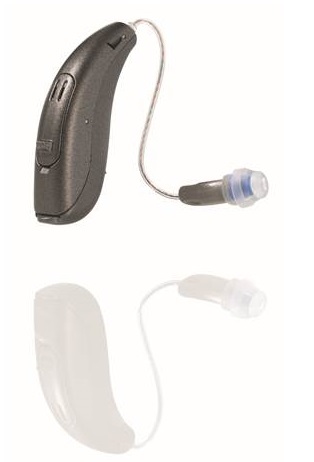
Figure 1. The Nano RITE.
Features
Speech Variable Processing
Speech Variable Processing (SVP) is the core of our newest Sonic product platform. It accurately measures the incoming signal and applies gain appropriately, especially for soft sounds. In most cases, soft sounds are missed completely or are over amplified. The benefit of SVP is that it will make sound clear and natural in a variety of listening situations.
People with hearing loss are listening in more dynamic environments than ever before. It is important to have a hearing instrument that can keep up with the rapid changes. SVP takes into account three things: speech, speed and preservation. It takes into account the fact that speech is incredibly complex and dynamic; it is forever changing. Because of those rapid changes, we need speed - we have to apply amplification quickly to be correct. Not only does this come into play with a fast attack, but also, in our opinion, a fast release. Lastly, preserving spectral contrasts is key to speech clarity. Hearing instrument wearers can sometimes struggle with speech understanding if they do not have an instrument that can keep up with dynamic speech in changing environments.
Speech
During a speech passage, individual sounds or phonemes can be short or long, and the amplitude over time changes dramatically. A healthy cochlea is a very sophisticated system. In the cochlear amplifier model at Sonic, we feel that we have to have something incredibly sophisticated and fast to replicate speech accurately.
Figure 2 shows our tagline, “Everyday Sounds Better,” as a speech waveform. You can plainly see the energy that that “a” is carrying. Vowels typically are the energy carriers. On the other hand, the “s” in sound is so small. This is one example of the varying intensity and strength in a speech passage. You can see varying intensities and overall strength. It is important to have a hearing instrument that can recognize these rapid nuances.
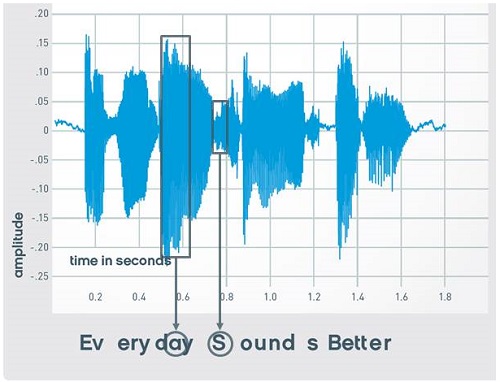
Figure 2. Speech waveform of “everyday sounds better,” highlighting the amplitude differences between vowels and consonants.
Speed
The healthy cochlea measures the level of incoming sounds quickly. It will, therefore, quickly control the amplification of sound. Soft sounds need to be amplified; loud sounds may need to be compressed. We want to make sure that that hearing instrument is comfortable as well. This speed is key to maintaining natural sound quality. Part of our 4S Foundation is 'sounds that are natural'. They should not sound like a hearing instrument, but how a hearing-impaired person remembers hearing.
The first animation I will show you illustrates how the speed of SVP maintains a natural sound quality, and how this differs from traditional systems.
Video (click on image to play):
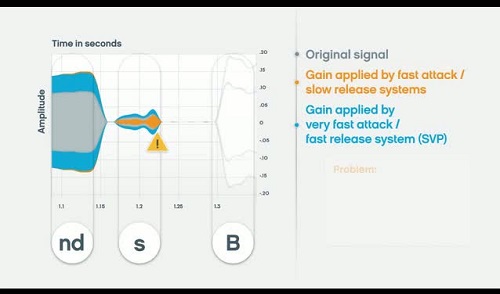
What you see in this video, is a graphical representation of the speech waveform “nds be” from sounds better. The gray is the original signal. The orange is the gain that is applied using a traditional fast-attack and slow-release system. The blue is the gain that is applied with Sonic SVP, which is a fast-attack, fast-release system.
For the “nds” of the word sounds, the blue and the orange are nearly overlapping, or applying the same amount of amplification. Both traditional and SVP systems both are able to accurately apply the amount of gain. That is a long signal as is is preceded by vowels, so the traditional system has had enough time to manage the signal and apply appropriate gain to the "nds". On these long vowel signals, traditional systems do not have a problem.
However, when we come into the “s”, there is an issue. The traditional system (orange) does not have enough time to release, and completely misses the “s”. So the small amount of gain applied to the “nd” is still applied to the “s.”
Since SVP has a fast release, it releases the “nd” sound quickly, and respond accordingly to the “s” signal so that it is appropriately amplified for audibility.
If you now look at the "b" in better, you will see another problem with the traditional system. Because the “s” signal was completely underamplified in the traditional system, the amount of gain that was missed is now applied to the following phoneme, which is the “b” of better in this case. That is a strong sound, and the traditional system overamplifies it. It overshoots the amount of amplification needed.
A hearing instrument wearer will tell us that the instrument sounds harsh, sharp or shrill. With SVP’s fast attack and fast release, we are able to attack the next “b” sound correctly and prescribe the correct amount of amplification, keeping sounds natural.
Frequency Contrast
The healthy cochlea does a tremendous job preserving the level differences across frequencies for each phoneme. Maintaining these frequency contrasts is imperative to be able to tell similar but different phonemes apart, especially in the English language. If you have a damaged system with a hearing instrument that cannot keep up, the outcome will be poor. Clarity requires frequency contrast. The following video demonstrates the frequency contrast.
Video (click on image to play):
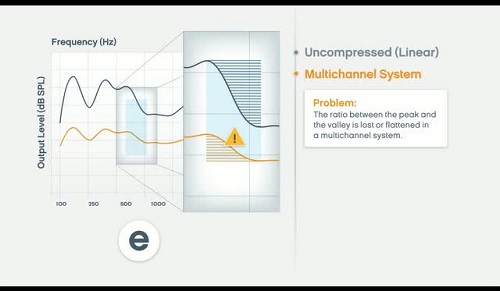
You saw the gray, orange, and yellow. We see an uncompressed linear signal, and then we apply the multichannel, traditional system (orange). However, the ratio between the peak and the valley is lost in the multichannel system. Because SVP takes a complete picture of the signal, it analyzes every aspect of that signal and handles it accordingly. The traditional multichannel system takes picture, and divides it up into many little pieces. It takes an average of an average of an average. In this approach, you lose all the specificity of the amplitude peaks and troughs, and the signal goes flat. The uncompressed linear signal (gray) has many peaks and troughs, but the difference in the peak-to-trough ratio with the uncompressed linear signal to the multichannel system is drastic.
Speech Variable Processing
Because we do not divvy up the signal into different pieces, we can maintain the peak-to-trough ratio with SVP, ensure more precise frequency contrasts. When you have a system that can replicate and mimic true frequency contrast because of the speed, your patients will be happy with what they are hearing.
Noise Management
While we have many systems in place to address noise, the adaptive feedback canceller is particularly helpful. Figure 3 shows a schematic of what happens in this process. When the signal comes in, the system memorizes the signal characteristics. All adaptive cancellers have a phase inverter. However, this memory aspect is what makes our system unique, because if a signal comes back, the hearing instrument recognizes that it is a repeat signal and will address it as feedback. Because our system does this so rapidly, feedback is not noticeable for our patients. Our patients are finally experiencing true squeal-free, easy listening.
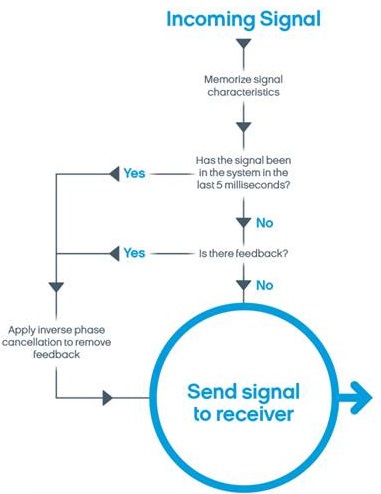
Figure 3. Noise management flowchart for Sonic instruments.
Wind Noise Reduction
Wind is not pleasant when you are wearing a hearing instrument. Our wind noise reduction algorithm detects uncorrelated wind noise between the directional microphones. Our patients experience relief from loud, distracting noise. Patients report that they can golf again while wearing their hearing instrument.
Soft Noise Reduction
Sonic has always handled low-level sounds very well by using expansion to manage the gain for these signals while still maintaining the gain for speech. This is a huge comfort measure for patients, especially new users who may have good hearing in the low frequencies or traditional presbycusis.
Speech Priority Noise Reduction
Speech Priority Noise Reduction, SPNR, does just what it says. We are going to monitor the input and determine the modulation fingerprint of that specific signal. Highly modulated signals are speech and should be preserved; steady-state noise should be attenuated. While this seems logical, not every system can do it. Fortunately, ours does a great job and preserves speech intelligibility. I would like to share our SPNR interactive animation.
Video (click on image to play):
In this, you can see the amplitude of our tagline “everyday sounds better”. Since there is no noise present, there is no signal-to-noise ratio. Next a 65 dB steady-state signal is presented, yet since there is no speech, we still cannot calculate a signal-to-noise ratio. Then, a signal is presented that combines the noise and speech signals together without any noise reduction.
As you can see from the animation, the biggest problem with the traditional system is speed. It takes 0.6 seconds to even engage, which is not fast enough to manage the speech from the noise separately. Once it starts, it applies a flat attenuation to the signal - both the noise and the speech. When speech is attenuated, audibility is an issue. And even with a flat level of attenuation, traditional systems take a while to engage. They just not fast enough to manage these signals.
We only engage our SPNR system when the signal is compromised. Because SPNR is so fast, it can calculate the signal accurately at any given moment. Attenuation is only applied when the signal-to-noise ratio is poor. When it is good, we do not want to attenuate, because that is how the healthy cochlea is operating. We want to keep speech clear and natural.
I encourage you to compare these signals by using the "play" buttons in the animation, so that you can hear the differences between the original signal, the signal using traditional noise reduction system, and the signal with Sonic SPNR.
To which do you think your patients would prefer to listen? There is a noticeable difference, that you can both see in the graphs, and hear in the sound samples.
Impulsive Sounds
In general, the word “impulsive” has a negative connotation, yet you have to have a system in place to handle these kinds of sounds. Impulsive Noise Reduction is available in our 100- and 80-level technologies. It is going to monitor for three characteristics of a signal: sudden change in intensity, very short/quick in nature, and loud. If the signal meets those criteria, we employ fast-acting output compression.
For those who have attended a training seminar or seen us at Audiology Now, we have an impactful sound demonstration that shows our listeners how this system is working; our attendees are astounded at the difference it makes. Sharp sounds are sharp, especially for new users that may have not heard that in a long time. Impulsive sounds are uncomfortable. Dishes clanking and keys jingling can make you jump if you are not used to them. The Nano instruments include this impulse noise reduction that makes people comfortable with abrupt noises.
Directional Systems
We want to feature both fixed and adaptive systems. The benefit is allowing the patient to focus on the things they want to hear. We face what we want to hear and directional systems are important to do just that.
Binaural Coordination
Binaural coordination enables our smart technologies to work with a smart hearing instruments. Here, we have three components working together: binaural synchronization, environmental classification, and non-telephone ear control.
Synchronization ensures that changes made on one instrument are made to the other. This applies to volume control or functions under the push button, such as program changes. That is available in our 100-, 80-, and 60-level technologies.
Environment classification takes the input from both devices to create a 360-degree analysis of the environment. We all know that we hear with our brain, and that is exactly what this is doing. This feature is available on our 100-level and 80-level instruments.
Finally, our premium-level feature is the non-telephone ear control. That designates what the non-telephone ear should do. If I pick up my phone and put it to my left ear, my right ear is the non-telephone ear. How do we want that ear to handle incoming signals? Here is an animation to explain this technology.
Video (click on image to play):
Seamless Operation
We employ environment-based programming by offer our universal listening environment. That program is optimized for speech and speech-related cues, maximizing speech intelligibility, especially in noise. We are going to deliver a hands-free operation, giving patients a seamless listening experience.
Professional Ease of Use
To make the devices user-friendly for professionals, we offer preconfigured programs, such as the environment-based programming. We offer data-logging and data-learning, which are features that make it easy to configure your patient’s instrument. We all know success with an instrument relies largely on the counseling that you can provide. If you can spend minimal time programming and a lot of time counseling, that patient will have success.
Connectivity
With the Nano RITE product offering, we are introducing some new accessories. Connectivity at Sonic includes our SoundGate, TV Adapter, Telephone Adapter, and RCP Remote.
The new SoundGate (Figure 4) has a wireless range of up to 90 feet. It has a standard size stereo jack; the mini jack is no longer needed. The unit has an integrated T-coil, which can serve as a T-coil for hearing instruments that no longer have one on board. There is up to 10 hours of battery life while streaming, and there are three different neck strap sizes available. The new design incorporates a soft-touch coat on the outside.
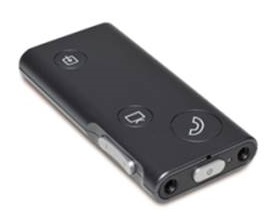
Figure 4. Sonic SoundGate.
We also have a new TV Adapter that works with both old and new SoundGate devices. It has wireless range of up to 30 meters, or 90 feet. The new SelectMe feature allows patients to use more than one TV Adapter in the home with just the press of a button; it does not have to reconfigure the setup with each different TV every time. It also supports TOSLINK. Newer TVs require TV adapter that support newer configurations. The TOSLINK digital cable input and output is a great improvement. Finally, we offer the Dolby Digital support, which can decode audio and the Dolby Digital format.
We also have a brand new phone adapter. It, too, is compatible with the original SoundGate. It has a wireless range up to 90 feet. This updated accessory now connects to a digital office phone using a Sennheiser accessory that you can order through us. It has a modern, discrete design.
Nano RITE
The Nano RITE encapsulates style that stands out and our 4S platform: sound that’s natural, speech understanding in noise, style that stands out, and simplicity. The on-board features and controls are shown in Figure 5. Notable features include front and rear mics, the receiver in the ear, and the ProWax system, which does a great job defending against cerumen. There is a replacement retention lock that is a great improvement over the receiver in the canal (RIC) design for the Flip. Finally, it has the replaceable dome that covers that receiver.
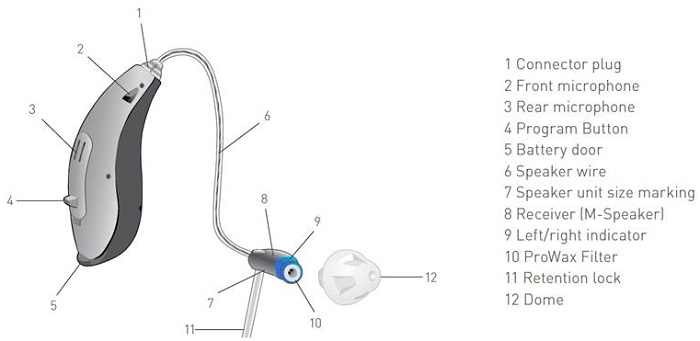
Figure 5. Nano RITE overview.
The Nano RITE has two speaker options: standard (M) and power (P). The M speaker can be fit for losses down to 85 dB, and the P speaker is appropriate for up to a flat 95 dB loss. The OSPL 90 (2-cc coupler) for the M speaker is 109 dB SPL, and the full-on peak gain is at 50 dB SPL. The power speaker is 124 dB SPL OSPL 90 and 65 dB full-on peak gain.
I want to point out that the Nano RITE has a brand new speaker design for Sonic. Our clinicians told us they wanted a replaceable retention cord, and we listened. In the Flip product, the receiver angle did not match every ear. The Nano has a high success rate of contouring to the head.
Using Nano
Let’s talk about manipulating the Nano. I want to mention that all of the instructions I will go over to operate the instruments are available on our website, or we can send them to you.
Speaker Unit
Attaching the speaker unit is very easy. You slide the connector plug, which is the top of the receiver, into the connector socket of the instrument. Take care to align the pins in the connector plug with the socket. When it is all connected and the pin is tight, you can push it directly into place with the tweezer tool that is provided with the instrument (Figure 6).
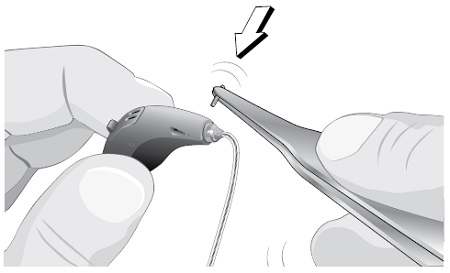
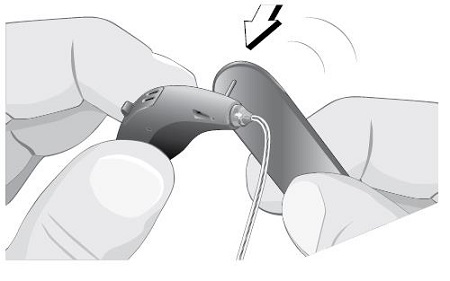
Figure 6. Attaching the speaker unit on the Nano.
Once the lock pin has been placed through the speaker into the housing of the instrument, pull the speaker unit near the connection to test if it is well-seated. This will guarantee that the receiver will not fall off of the instrument. If it comes off, it was not seated properly, and you should start over from the beginning.
To detach the speaker, use the pointed end of the disassembly tool (Figure 7) to push the lock pin free. Poke it out and grab the other side with the tweezers. Do not attempt to detach a speaker by pulling the wire because you can damage the instrument. Make sure that the lock pin is free before you remove and pull out the connector.

Figure 7. Detaching the speaker unit with the disassembly tool.
Retention Lock
You may also hear the retention lock referred to as the feather. Ultimately, it holds the receiver more snugly in the canal. Insert the retention lock in the slot (Figure 8). If the retention lock seems too long, you can trim it. To remove the retention lock, push up from the bottom and pull it right out with your fingers or a pair of tweezers.
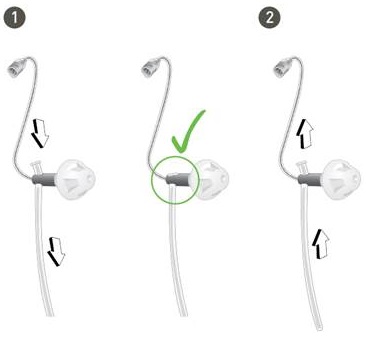
Figure 8. Inserting and removing the retention lock from the speaker unit.
Custom Molds
We have custom molds available for the Nano (Figure 9). The standard speaker requires a small adapter, whether it is a Micro Mold or a Lite Tip. The power speaker is very similar to the power design of the Flip receiver, involving the face plate lock in the mold. When it is in the ear, the mold looks like an in-the-canal (ITC) device. The micro molds now provide a front-top indicator for visual placement, a micro mold adapter, a wax stop filter, and pull-out string. The Lite Tip has an adapter and the ProWax filter.
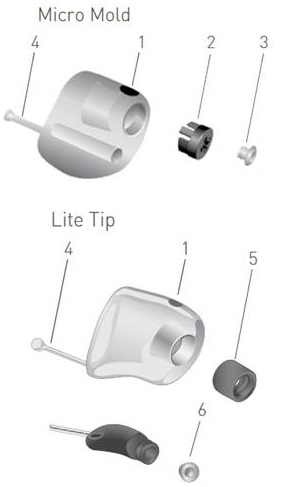
Figure 9. Micro Mold and Lite Tip features.
Feature Summary
In the beginning, we talked about Nano’s technology. Then we covered how to manipulate the Nano. Now let’s about all the features when you look at it all together.
There are four different Nano product offerings: Bliss 100, Bliss 80, Charm 60, and Charm 40 (Figure 10). This represents our premium 100-level technology all the way day to our basic 40-level technology. We have something at every price point for your patients in the Nano RITE.
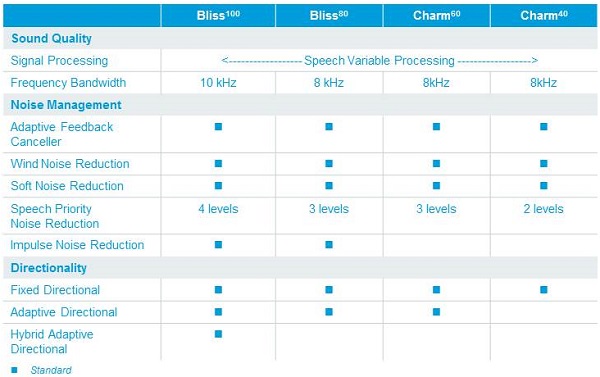
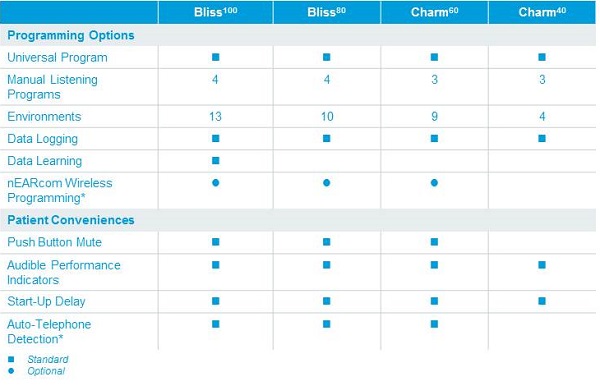
Figure 10. Nano RITE feature and product summary.
All technologies are going to use SVP. Other manufacturers will put a different processor in the entry-level products, but we feel it is important to put our best processor in every product.
The frequency bandwidth at the 100-level technology extends out to 10,000 Hz. The 80, 60, and 40 products extend out to 8,000 Hz. We feel the adaptive feedback canceller should be offered at all price points as noise management is imperative for speech understanding. The impulse noise reduction is available in the 100- and 80-level technologies. The SPNR is available in 4 levels in the 100-level product. Additionally, all levels of directionality are included in the 100-level technology.
Every product level has a universal program, but some levels offer more environment-based programs. The 100 level has 13 programs available, whereas the 40 level has 4. NEARcom is available for wireless programming in any of the wireless technology in the 60, 80, and 100 levels. For patient convenience, there is push button mute, audible indicators, and auto telephone feature on wireless products. (The Charm 40 Nano RITE is not a wireless instrument; wireless is available in 60, 80, and 100 levels.) Binaural coordination is also available in the 60, 80, and 100 levels.
Environment classification is available at the 100 and 80 levels, and the non-telephone ear control is at the 100 level only as a premium feature.
Our brand new SoundGate, TV Adapter, and Phone Adapter are all available in the 60, 80, and 100 levels with the Nano. The RCP Remote is our basic remote which requires wireless connectivity, and is available in the 60, 80, and 100 levels.
Lastly, programming with the ExpressFit 2014 is easy. You can spend quality time counseling your patients.
Reliability
The Nano RITE received a rating of IP57. IP stands for International Protection Code, and it is used to determine how much moisture and debris is allowed before an instrument will fail. The 5 rating means robust protection against the entry of dust, and the 7 rating means it is protected in temporary immersion in water up to a meter for 30 minutes. I am pleased to report that all of our over-the-ear models, including open fits, have received IP57 ratings. Reliability is essential today, and the Nano RITE is another instrument that exceeds expectations.
4S Foundation Review
Figure 11 summarizes our 4S Foundation and what the Nano offers in each of the four tenets. The Nano has sound that is natural with SVP. It has speech understanding in noise with very clear sound, as shown by the animation I played on SPNR. Physically, the instrument is simple to manipulate. It has great controls, with great style. The 312 design sleek, discrete and inconspicuous and something you want in your portfolio for patients. Thanks for your attention today, and please feel free to contact me at Sonic if you have any questions or inquiries.

Figure 11. Sonic 4S Foundation and applicable factors and features.
Cite this content as:
Reichert, E. (2014, December). Introducing Nano RITE, Sonic newest product. AudiologyOnline, Article 13114. Retrieved from: https://www.audiologyonline.com




